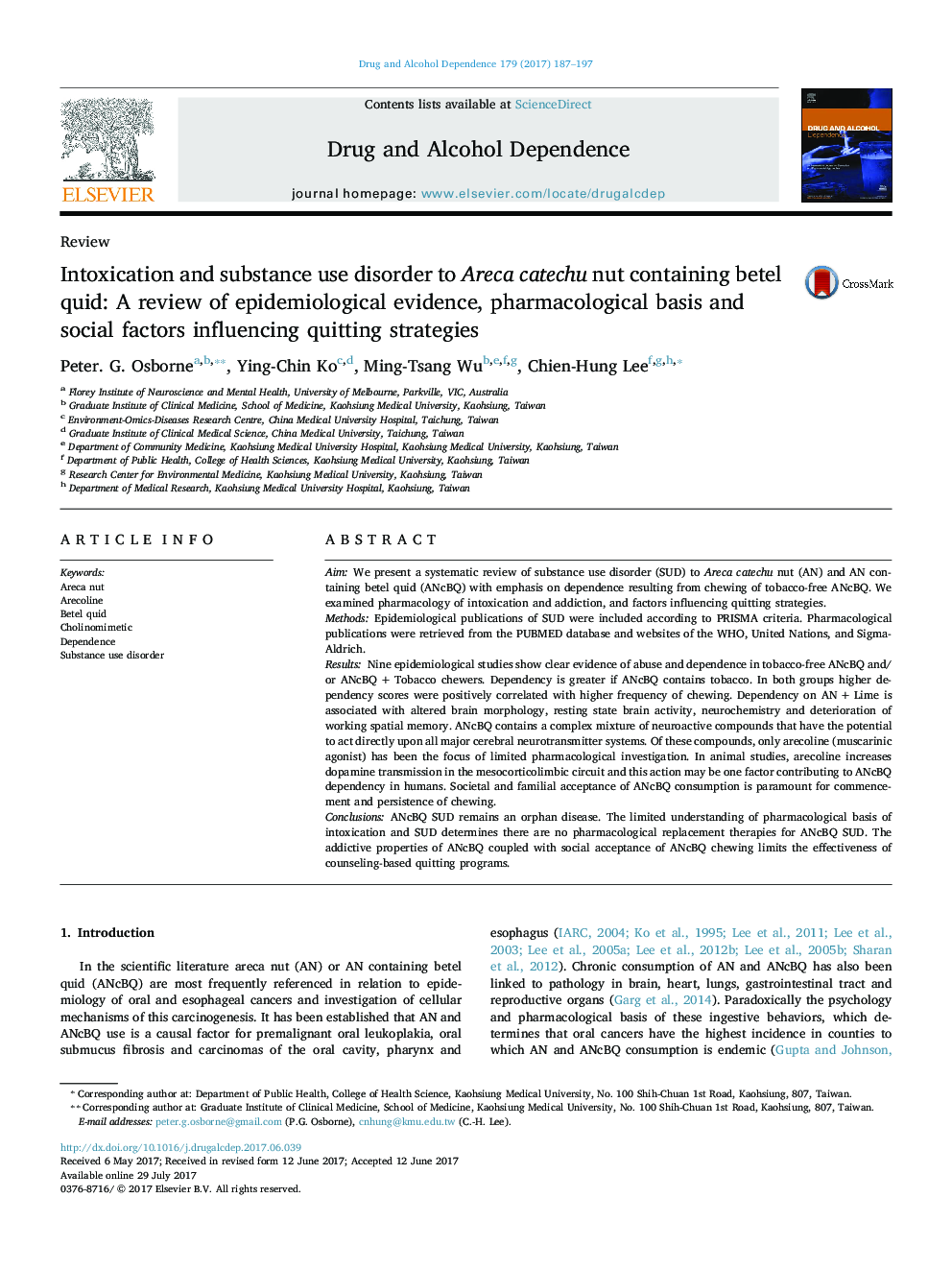| کد مقاله | کد نشریه | سال انتشار | مقاله انگلیسی | نسخه تمام متن |
|---|---|---|---|---|
| 5119924 | 1486112 | 2017 | 11 صفحه PDF | دانلود رایگان |

- Areca catechu nut betel quid (ANcBQ) substance use disorder is an orphan disease.
- Abuse and dependence occurs in subsets of tobacco free ANcBQ (TFANcBQ) chewers.
- Compounds in ANcBQ can influence acetylcholine (ACh), Gamma-Amino Butyric acid (GABA), dopamine and serotonin transmission.
- TFANcBQ dependence involves altered brain morphology, neurochemistry and function.
- Addiction, social acceptance and no drug therapy limit quitting of ANcBQ chewing.
AimWe present a systematic review of substance use disorder (SUD) to Areca catechu nut (AN) and AN containing betel quid (ANcBQ) with emphasis on dependence resulting from chewing of tobacco-free ANcBQ. We examined pharmacology of intoxication and addiction, and factors influencing quitting strategies.MethodsEpidemiological publications of SUD were included according to PRISMA criteria. Pharmacological publications were retrieved from the PUBMED database and websites of the WHO, United Nations, and Sigma-Aldrich.ResultsNine epidemiological studies show clear evidence of abuse and dependence in tobacco-free ANcBQ and/or ANcBQÂ +Â Tobacco chewers. Dependency is greater if ANcBQ contains tobacco. In both groups higher dependency scores were positively correlated with higher frequency of chewing. Dependency on ANÂ +Â Lime is associated with altered brain morphology, resting state brain activity, neurochemistry and deterioration of working spatial memory. ANcBQ contains a complex mixture of neuroactive compounds that have the potential to act directly upon all major cerebral neurotransmitter systems. Of these compounds, only arecoline (muscarinic agonist) has been the focus of limited pharmacological investigation. In animal studies, arecoline increases dopamine transmission in the mesocorticolimbic circuit and this action may be one factor contributing to ANcBQ dependency in humans. Societal and familial acceptance of ANcBQ consumption is paramount for commencement and persistence of chewing.ConclusionsANcBQ SUD remains an orphan disease. The limited understanding of pharmacological basis of intoxication and SUD determines there are no pharmacological replacement therapies for ANcBQ SUD. The addictive properties of ANcBQ coupled with social acceptance of ANcBQ chewing limits the effectiveness of counseling-based quitting programs.
Journal: Drug and Alcohol Dependence - Volume 179, 1 October 2017, Pages 187-197